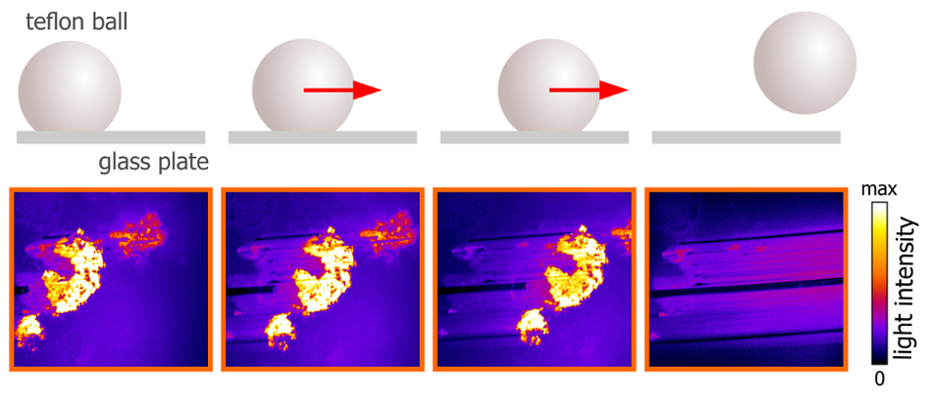The surface of Teflon – the non-stick coating in your pan – is incredibly slippery. Thanks to research carried out at the Van der Waals-Zeeman Institute (UvA) and research centre ARCNL, we finally know where this slipperiness comes from: the plastic transfers an ultra-thin layer of itself to objects that rub against it. So objects don’t slide over Teflon, but Teflon slides over itself

Polytetrafluoroethylene (PTFE), or Teflon, is known for its slippery and non-stick properties. This wonder material was discovered 85 years ago, and since then Teflon coatings have found many applications: they make pans non-stick, waterproof raincoats, reduce friction in bicycles, and protect medical devices and laboratory equipment from heat and wear.
The friction of Teflon is about as low as that of a skate on ice. “Teflon is really an outlier, with a much lower friction per area of friction surface than any of the other types of plastics. We just didn’t know why this was so. That is why we wanted to better understand the mechanism behind it,” says Hans Terwisscha-Dekker, PhD candidate at the UvA.
To find out, Terwisscha-Dekker and his colleagues looked at what happens on a very small scale when a Teflon ball of one and a half millimeters in diameter comes into contact with another surface. To be able to see this, they used a glass slide coated with special fluorescent molecules. These molecules light up when put under pressure, so the researchers can see exactly where the Teflon ball makes contact and exerts pressure on the glass slide.
When a Teflon ball is brought into contact with the glass plate, parts of the plate light up. If the ball is then lifted again, the molecules immediately stop emitting light. But if the ball is dragged horizontally across the glass plate, it leaves an illuminated trail that remains even when the ball is lifted. “When dragging, the Teflon ball leaves a very thin layer behind, a few nanometers thick, which sticks to the counter surface. As a result, the Teflon slides over itself, rather than over the glass plate surface,” explains Terwisscha-Dekker.
He adds: “It was very surprising to us that Teflon leaves such a film, because it normally doesn’t stick at all. Our research shows that Teflon’s adhesive strength – which determines how easily it sticks to a surface – is indeed very low, but still large enough to leave behind a film during sliding because the internal cohesion of Teflon is even lower in the outer few nanometres.
“Very little is still known about how friction works at a fundamental level. When two materials come into contact, the molecules or atoms at their surfaces interact over very small length scales. This process is hidden between the two materials and is therefore difficult to observe. What we have shown is that sometimes it is not the interactions between the materials, but the interactions within one of the materials – Teflon that slides a layer away from itself – that determines the friction.”
This property explains why Teflon is so slippery. When the same experiment is performed with small balls of PMMA, or Plexiglas, no illuminated trace is left behind. Because PMMA and other plastics do not leave a layer of their own, their friction is determined by the interactions with the counter-surface, and their friction is much higher.
These results put our frequent use of plastics in a new light. Terwisscha-Dekker: “Because Teflon has so many applications, it is important to know that it wears off in this way when something slides over it. This is certainly relevant if you fry something in a Teflon pan!”
Publication
Hans Terwisscha-Dekker, Tadeus Hogenelst, Roland Bliem, Bart Weber and Daniel Bonn. Why Teflon is so slippery while other polymers are not. Phys. Rev. E 107, 024801 (2023).
